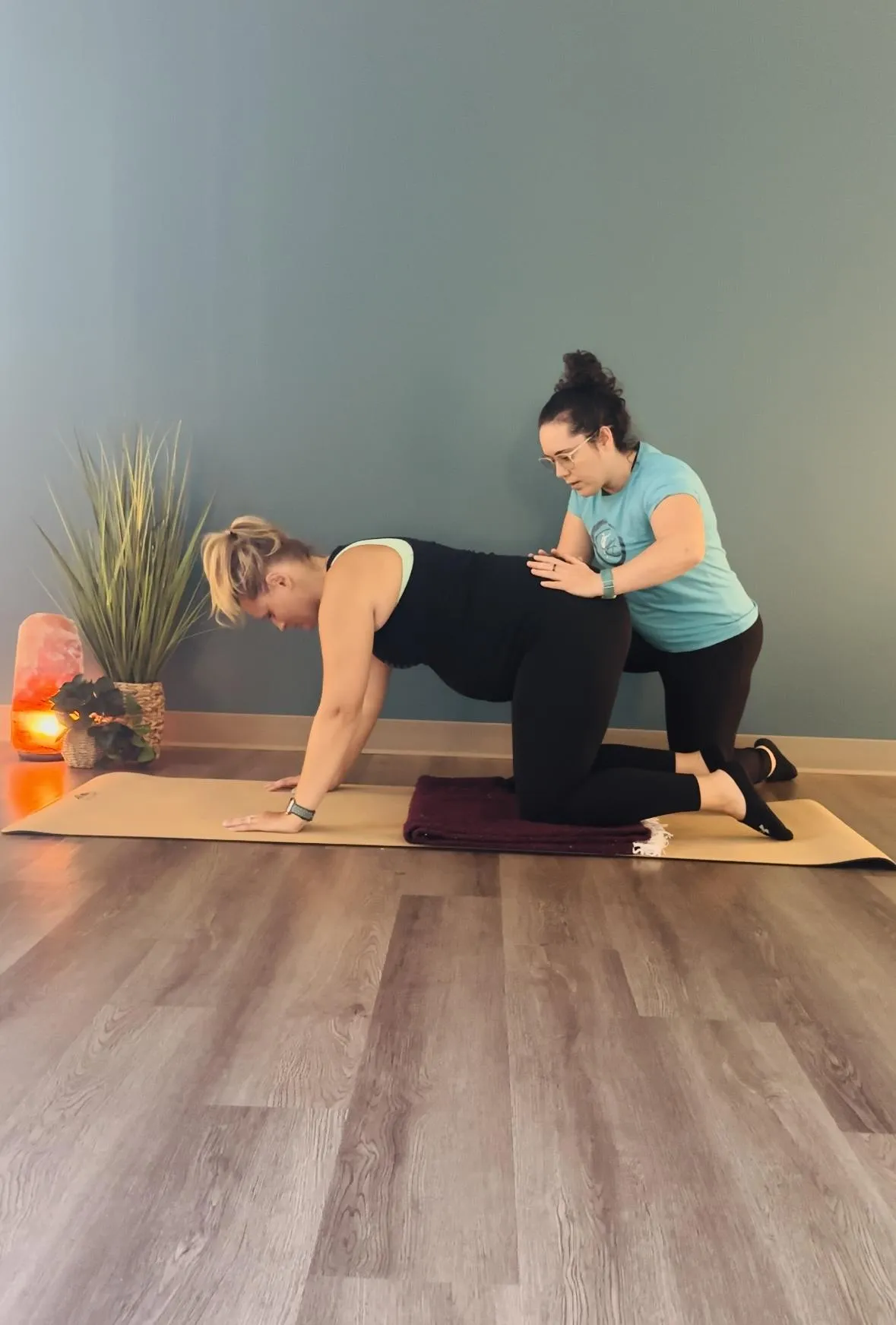
Childbirth Preparation with a Pelvic Floor PT – Part 1: Creating Space at the Pelvic Inlet
Childbirth Preparation with a Pelvic Floor PT – Part 1: Creating Space at the Pelvic Inlet
When preparing for childbirth, understanding how the baby navigates through the pelvis is key. The pelvis isn’t just a fixed bony structure—it’s dynamic, and how it moves during labor can affect how smoothly the baby descends.
Learn how pelvic floor physical therapy supports childbirth prep by optimizing the pelvic inlet, improving mobility, and relieving tension.
The pelvic inlet is the top opening of the pelvis. It’s the first “gate” the baby passes through during labor. This space is widest from side to side and baby typically enters the pelvis with their head tilted and turned to navigate through.
During this phase, the baby is engaging in early labor and beginning descent. The uterus contracts to help the baby press down into the pelvis, starting the journey through the birth canal.
How Maternal Movement Helps at the Pelvic Inlet
To create space at the inlet, we want to encourage widening of the upper pelvis. This happens when the ischial spines move closer together and the iliac crests open. This creates external rotation of the hips and pelvis.
✅ Try movements like:
Quadruped (hands and knees) rocking over a birth ball with knees wide and feet together
Squatting with partner assistance or use of a birthing bar
How a Pelvic Floor PT Helps During the Inlet Phase
A pelvic floor physical therapist can support:
Education on optimal positions for the inlet phase
Pelvic mobility work to ensure the bony pelvis and soft tissues allow baby to descend
Breath coaching to reduce tension and promote pelvic floor relaxation
Pain relief strategies including hands-on support and education to participants who will be present during labor and delivery
Most importantly, we help identify if your pelvic floor is holding too much tension. A tense pelvic floor can make it harder for baby to engage and progress through labor.
⚠️ Signs You Might Have Increased Pelvic Floor Tension:
Pain with sex or pelvic exams
Leakage with sneezing, coughing, or running
Constipation or straining with bowel movements
If these symptoms are present, they’re signs your pelvic floor may need more relaxation than strength—especially before labor.
Partner with a pelvic floor physical therapist who is experienced in childbirth prep. They’ll help you identify and treat pelvic floor tension, teach techniques that support your labor goals, and become a key member of your birth plan team.
Ready to Take Control of Your Pelvic Health?
At Renew Health in East Longmeadow, MA, we help expectant parents prepare for birth by addressing the root causes of pelvic floor dysfunction, restoring muscular balance, and providing expert guidance in breath, movement, and core coordination. Our goal is to help you feel strong, confident, and fully supported—whether you're preparing for your first birth or your fourth.
Curious if pelvic floor therapy is right for you? Fill out our contact form to chat with one of our pelvic health specialists!
📋 Contact Us
📍 Renew Health – East Longmeadow, MA
FAQs: Childbirth Preparation
Q: What is the pelvic inlet in childbirth?
A: It’s the upper opening of the pelvis where the baby first enters during labor.
Q: How does pelvic floor therapy help during childbirth?
A: A PT can teach movement strategies, reduce pelvic floor tension, and guide labor positions for optimal baby descent.